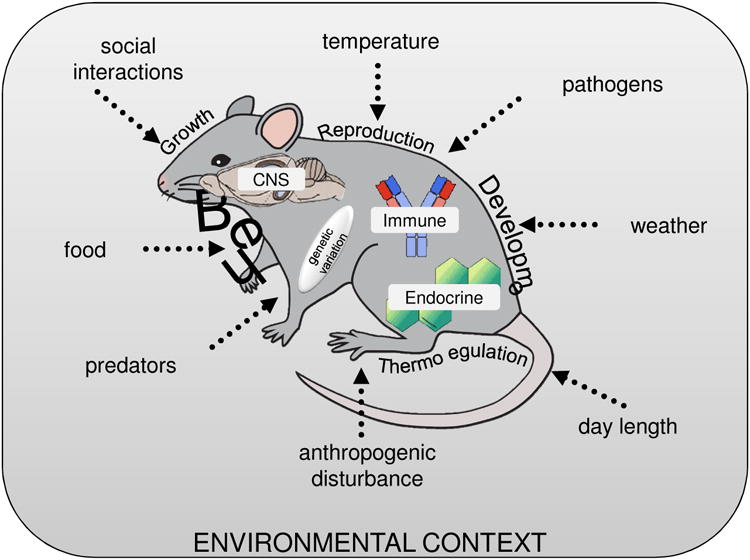Figure 1.


Graphic model displaying the respective research emphases within the fields of ecoimmunology and psychoneuroimmunology. PNI largely focuses on the interactions of internal physiological systems, represented in the diagram by the traditional laboratory mouse. These systems include, but are not limited to, interactions among the nervous, endocrine and immune systems and their concomitant signaling molecules (e.g., neurotransmitters, neurotropic factors, hormones and cytokines). Also nested with the organism is genetic variability across individuals, which will vary considerably depending on whether the study system is a wild animal or an inbred model organism. In either case, this variability (or lack thereof), has the potential to modify the interactions among the physiological systems. Morphological, physiological, and behavioral outputs from such interactions are represented by the outer “skin” of the mouse, and include what are traditionally considered by ecoimmunologists as phenotypic traits (e.g., reproduction, growth and development, thermoregulation, and behavior). Our hypothetical mouse is nested within a larger environmental context (represented by the surrounding box). Within this context is included select examples from a nearly infinite suite of environmental variables that can range from biotic and abiotic factors, behavioral interactions with conspecifics, and the pathogen environment present in the animal's environmental niche. These environmental factors often vary across time (e.g., seasons, time of day) and space (geographic or population differences) and play an important role as “environmental input signals” to the organism. Lastly, the areas of shading represent the areas of overlap, or lack of overlap, between PNI and ecoimmunology, and serve to highlight key areas where greater integration and synthesis across the fields are needed.
